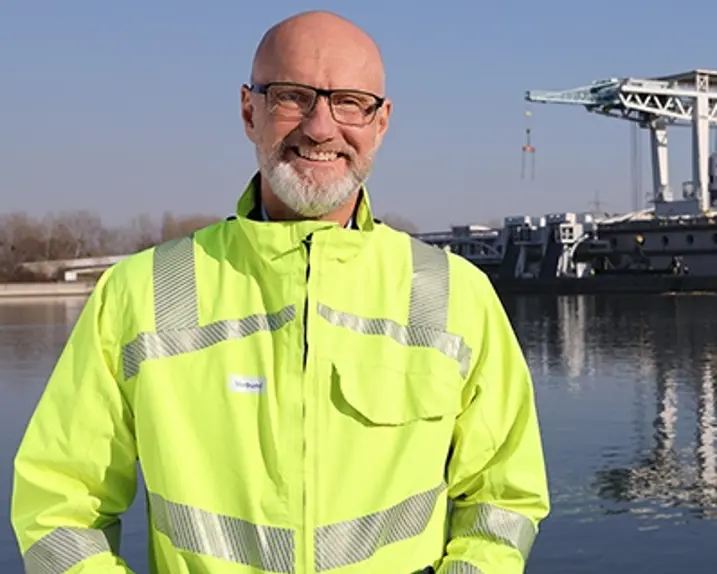Stegenwald power plant: Successful damming and grid connection
In April, further milestones were successfully reached at the Stegenwald power plant on the Salzach, a joint project between VERBUND and Salzburg AG. The reservoir was filled with water for the first time at the beginning of the month. After Easter, the first of the two generator sets was synchronized with the public power grid, i.e. electricity was produced and fed in for the first time. The official opening of the run-of-river power plant with the longest fish pass on the Salzach river is planned for September.
Synchronizing the generator with the power grid is an important and delicate process in electricity generation. It cannot simply be connected to the public power grid at the push of a button. The different frequencies, voltages and phase positions must correspond precisely beforehand. If the values are not synchronous, considerable damage can result from enormous current surges on the generator set. That is why precise planning is required. “The interaction between the many hydraulic and electrotechnical components was tested beforehand in weeks of meticulous work, first with the plant in a dry state and later with water,” explains Rudolf Palzenberger, plant engineering project manager at VERBUND. The second set of generators at the Stegenwald hydropower plant is scheduled to be connected to the grid in a month’s time.
“Damming of the Salzach river had to begin beforehand so that the water could be directed to the turbines. In early April, the reservoir was filled in three steps over one and a half weeks in accordance with planning. The time was used to carry out the necessary leak checks on the dams,” explains Deputy Project Manager Herwig Berkenhoff (Salzburg AG). Due to the current lower water supply and the necessary remaining dotation of the Salzach, accumulation was slow at around 1 cm per hour. In mid-April, the last metre was reached to achieve a water level target of 501.10 meters above the Adriatic Sea. In operation, the Stegenwald power plant has a head of 8.4 meters and will generate almost 74 million kilowatt hours of renewable electricity from hydropower. This will enable around 20,000 households to be supplied annually for the next 90 years. The power plant will remain in trial operation until it is fully completed in September 2025.
For the Stegenwald hydropower plant, a newly developed, innovative plant concept is being implemented for the first time. This can point the way for future medium-sized run-of-river power plants. Two vertical Kaplan turbines are being installed horizontally. The water is therefore not directed to the turbine from the front, but from above. This means the generator is not on top of the turbine, as is usual in run-of-river power plants, but in front of it. In operation, the powerhouse can also be flooded and used for flood discharge. The result is that the power plant can discharge 20 percent more water in the event of a flood than would have been possible with a third weir field. Another advantage of this combination is the compact, cost-efficient construction and rapid implementation. Compared to a traditional river power plant, construction time is reduced by a quarter. Of the overflowed system, only the weir bridge can be seen; the rest of the system is under water.
